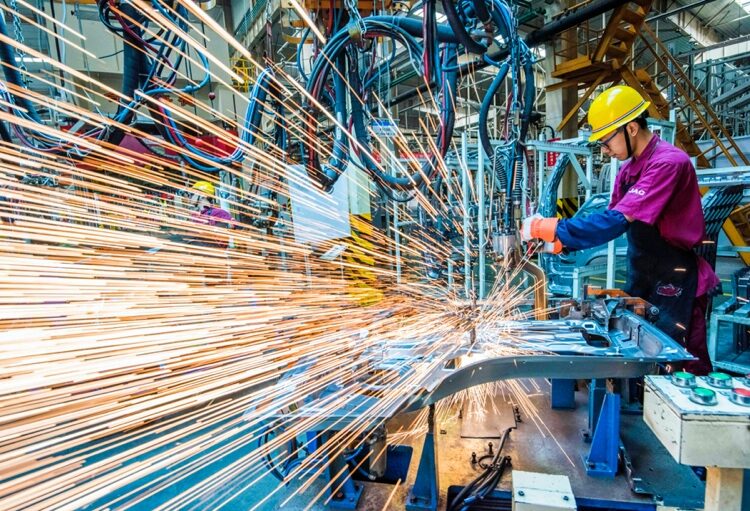By Lu Ya’nan, People’s Daily
China saw the first positive growth of total retail sales of consumer goods since this year in August, and the total value added of the industrial enterprises above the designated size shifted from negative to positive in the first 8 months of this year, said the country’s National Bureau of Statistics (NBS) at a press conference on Sept. 15.
NBS spokesperson Fu Linghui said despite pressures from both the COVID-19 fallout and floods, the country’s economy has sustained a steady recovery.
Many positive changes happened to China’s economy in August. In the first eight months, industrial output expanded 0.4 percent from one year earlier, compared with a decline of 0.4 percent in the January-July period.
The improved demand drove the growth of industries, said Fu, adding that the country’s value-added industrial output, an important economic indicator, went up 5.6 percent year on year in August, accelerating from a rise of 4.8 percent registered in July.
Most productions and industries achieved growth, according to the NBS. In terms of different products, in August, 394 of 612 products increased year on year. In other words, 64.4 percent of these products achieved growth, more than those from a month ago. In terms of different industries, in August, the value added of 29, or 70.7 percent of the 41 major industries maintained a year-on-year growth, 4 more than those in July.
Apart from industrial growth, China has also seenaccelerated steps of upgrading. The high-tech manufacturing enterprises above designated size achieved a growth of 7.6 percent in August, a figure obviously larger than the general growth of the industries above designated size.
New products such as service robots, segways and smart watches all witnessed a production growth above 70 percent, while that of industrial robots stood at 32.5 percent.
Retail sales of consumer goods, a main gauge of China’s consumption, returned to growth for the first time this year, rising by 0.5 percent year on year in August.
“August saw a larger pickup of sales from a month ago, which indicated the accelerated recovery of the consumer market,” said Zhang Min, a statistician with the NBS.
According to Zhang, China’s rural and urban markets recovered simultaneously. In August, the retail sales of urban and rural consumer goods increased 0.5 percent and 0.7 percent, respectively, while they decreased 1.1 percent and 1.3 percent in July.
Besides, the consumption went through faster upgrading. The sales of automobiles above the designated limit went up by 11.8 percent in August, and the sales of communication equipment, cosmetics, gold, silver and jewelry grew by 25.1 percent, 19.0 percent, and 15.3 percent respectively, up 13.8, 9.8 and 7.8 percentage points from those in July.
New consumption maintained rapid growth. From January to August, the online retail sales of physical goods grew by 15.8 percent, 0.1 percentage point higher than that in the first seven months. Driven by the growth of online shopping, China handled 7.24 billion express parcels throughout August, up 36.5 percent year on year.
Grouped by consumption patterns, the revenue of catering was down by 7 percent year on year in August, narrowing by 4 percentage points from July. The revenue contraction of the hotel industry above the designated limit also narrowed by 9 percentage points. As cinemas, tourist sites, and exhibitions gradually resumed operation, 250 million Chinese took train trips last month, up 42.5 million from July.
In the first eight months, the newly increased employed people in urban areas numbered 7.81 million, which equaled to 86.8 percent of the country’s annual target. In August, the urban surveyed unemployment rate was 5.6 percent, 0.1 percentage point lower than that in July.
In the first seven months, the total profits made by industrial enterprises above the designated size weredown by 8.1 percent year on year, narrower than that in the first six months. The Manufacturing PMI stood at 51.0 percent and the Non-Manufacturing Business Activity Index reached 55.2 percent, both above the threshold for six months in a row.












